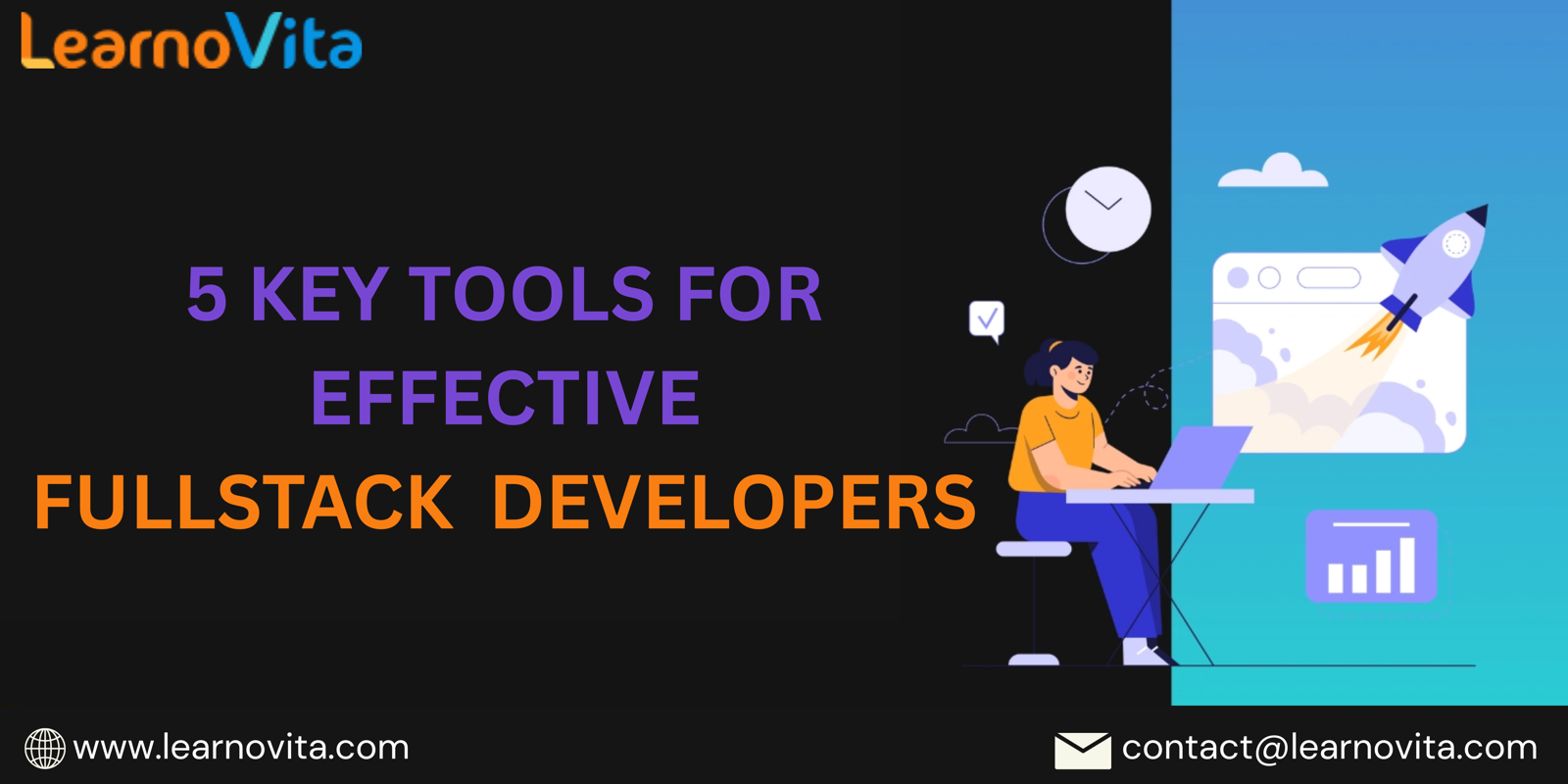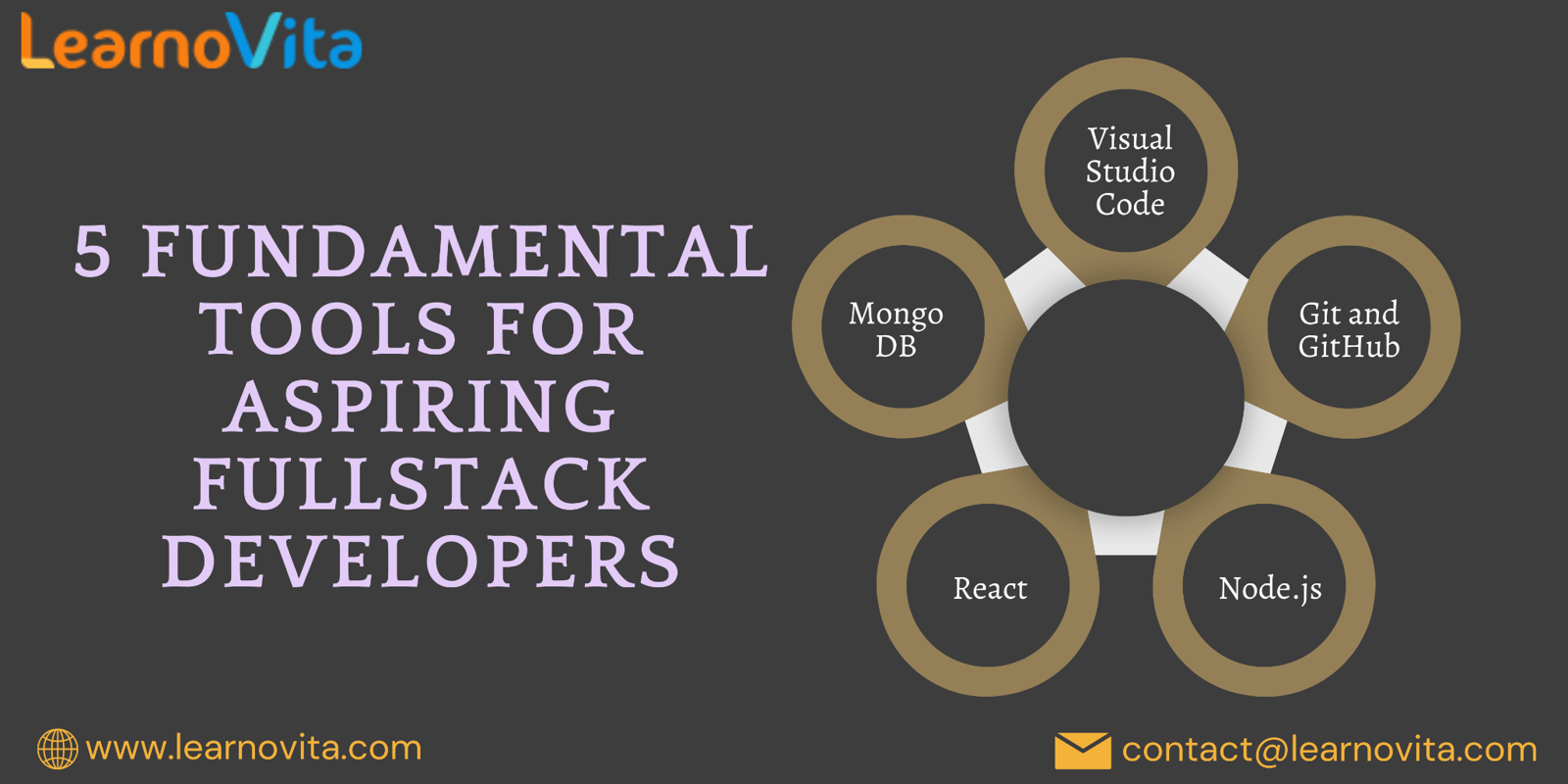In the ever-evolving landscape of web development, fullstack developers must juggle multiple tasks across both the front-end and back-end. To streamline this process, having the right tools is crucial. Here are five key tools that can enhance your efficiency and effectiveness as a fullstack web developer.
For those looking to enhance their skills, Full Stack Developer Course in Bangalore programs offer comprehensive education and job placement assistance, making it easier to master this tool and advance your career.

1. Visual Studio Code
Overview:
Visual Studio Code (VSCode) is a powerful and popular code editor that offers a wealth of features for developers. Its lightweight design and extensive functionality make it suitable for coding in various languages.
Key Features:
IntelliSense: Provides smart code completions based on your project’s context.
Extensions Marketplace: A vast array of plugins to enhance functionality, from linters to debuggers.
Integrated Terminal: Allows you to run commands without leaving the editor.
With its user-friendly interface and customization options, VSCode is a top choice for writing and managing code.
2. Git and GitHub
Overview:
Version control is essential for collaboration and code management, and Git is the industry standard for this purpose. When paired with GitHub, it becomes an invaluable asset for developers.
Key Features:
Branching and Merging: Work on features independently without disrupting the main codebase.
Pull Requests: Facilitate team collaboration and code reviews.
Issue Tracking: Manage bugs and feature requests effectively.
Git and GitHub empower developers to maintain a clean and organized codebase, making team collaboration smoother.
3. Node.js
Overview:
Node.js allows developers to run JavaScript on the server side, fostering a cohesive development experience across the entire stack. It’s particularly known for its speed and scalability.
Key Features:
Event-Driven Architecture: Ideal for building fast, scalable network applications.
NPM (Node Package Manager): Access to a rich ecosystem of libraries and tools for rapid development.
Node.js is essential for building robust back-end services and APIs, streamlining the development process with JavaScript.
With the aid of Full Stack Developer Course in Online programs, which offer comprehensive training and job placement support to anyone looking to develop their talents, it’s easier to learn this tool and advance your career.

4. React
Overview:
React is a widely used front-end library for building interactive user interfaces. Its component-based architecture simplifies the development of complex applications.
Key Features:
Virtual DOM: Optimizes rendering for improved performance.
Reusable Components: Easily create and maintain UI elements across your application.
Strong Community Support: A wealth of resources and libraries to enhance development.
Using React allows developers to create dynamic, high-performance user experiences efficiently.
5. MongoDB
Overview:
MongoDB is a NoSQL database that stores data in flexible, JSON-like documents, making it a perfect fit for modern web applications that require scalability and flexibility.
Key Features:
Schema Flexibility: Easily handle unstructured data and make real-time updates.
Scalability: Designed to grow with your application needs.
Rich Query Language: Perform complex queries easily.
MongoDB empowers fullstack developers to manage data effectively, supporting rapid development cycles.
Conclusion
Equipping yourself with the right tools can significantly enhance your productivity and effectiveness as a fullstack web developer. Visual Studio Code, Git and GitHub, Node.js, React, and MongoDB form a powerful toolkit that enables you to build robust web applications. By leveraging these tools, you’ll be better prepared to tackle the challenges of modern web development and create exceptional user experiences.


Write a comment ...